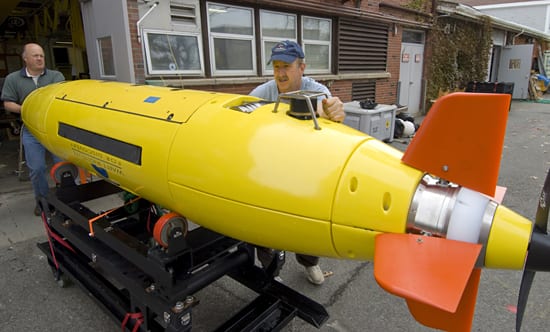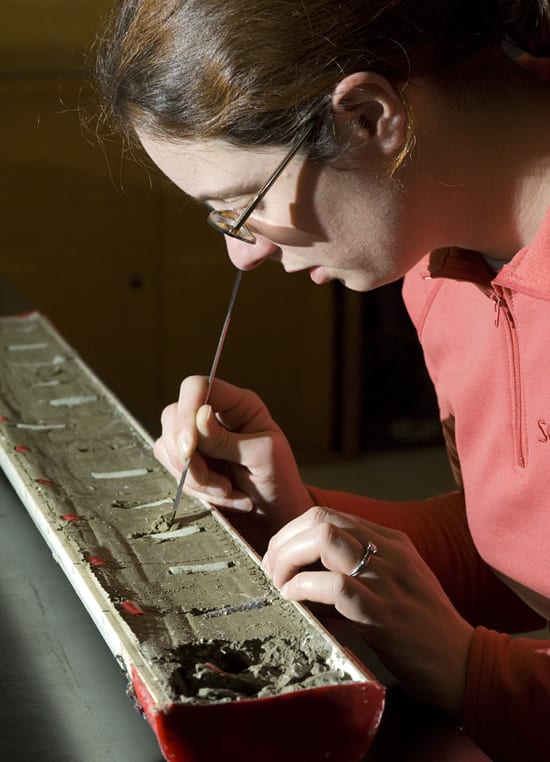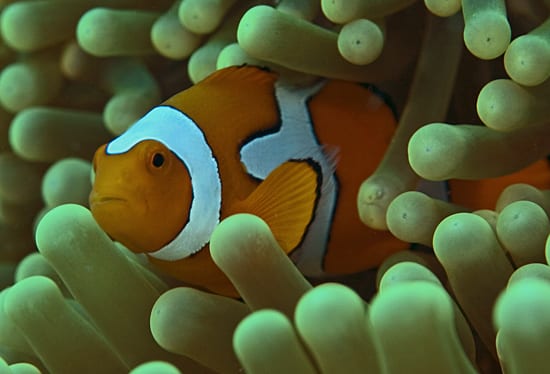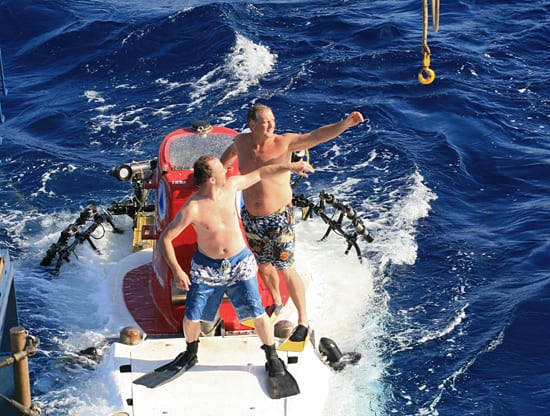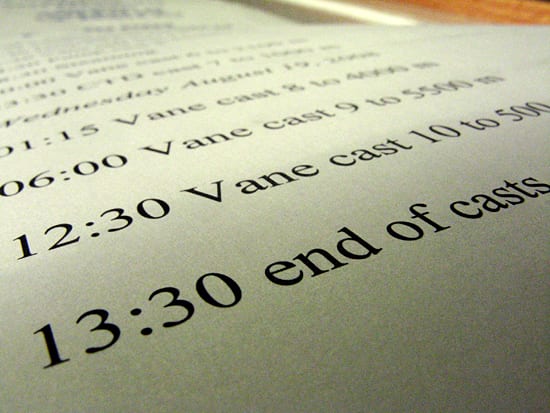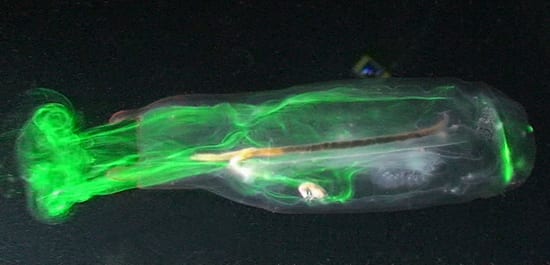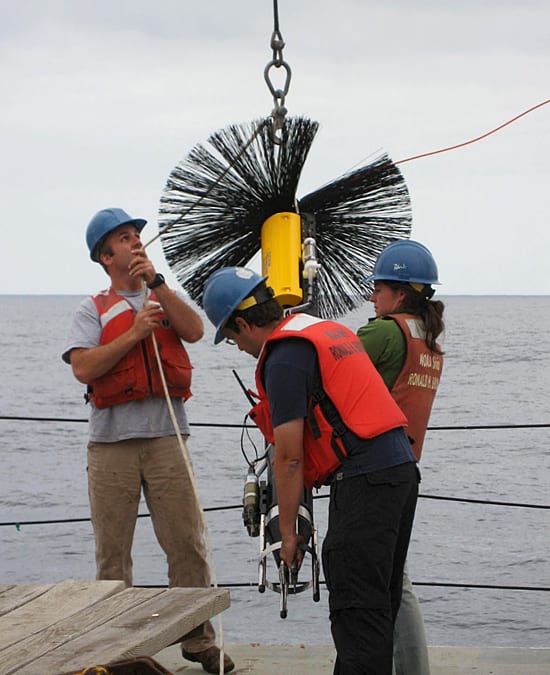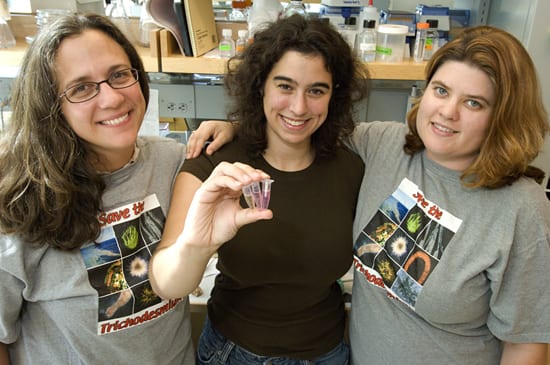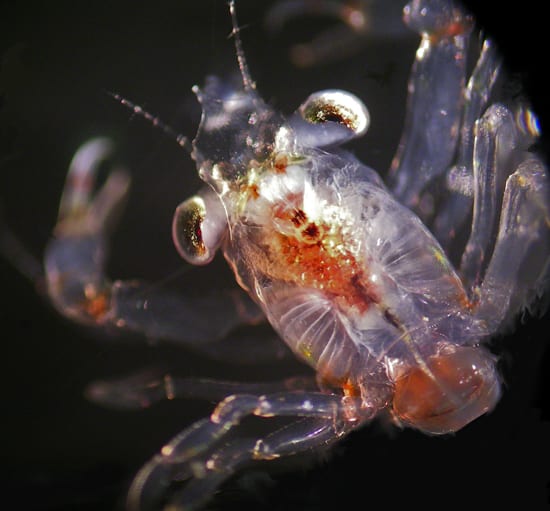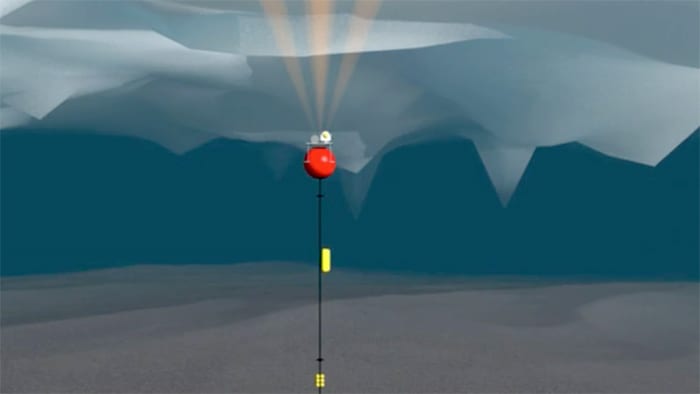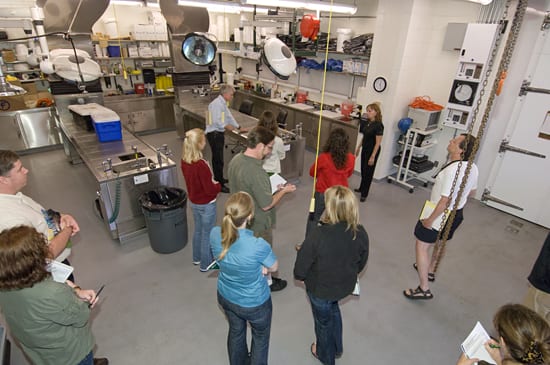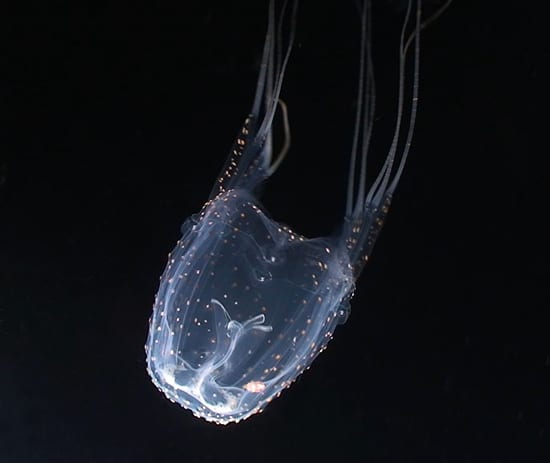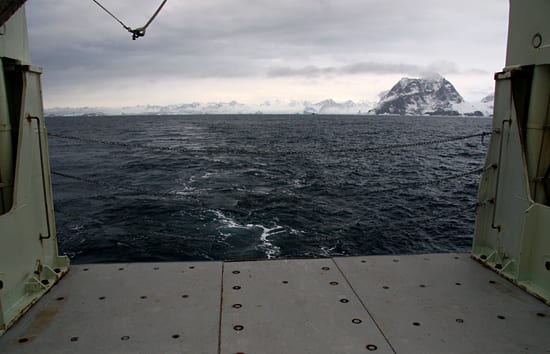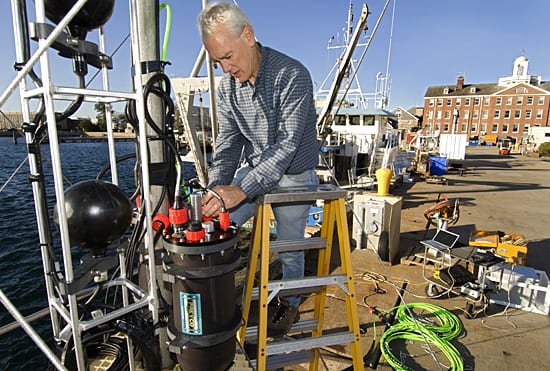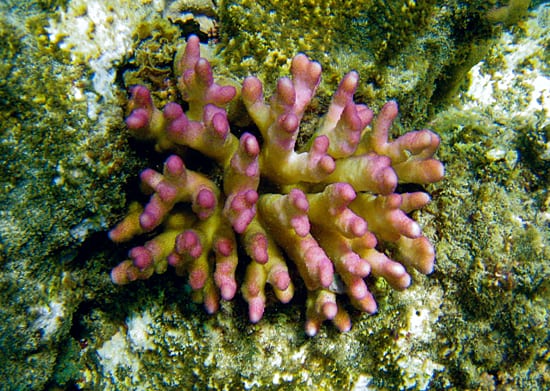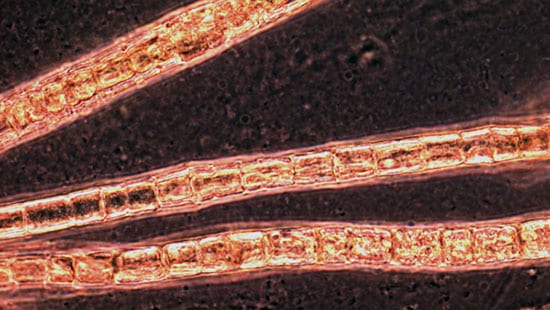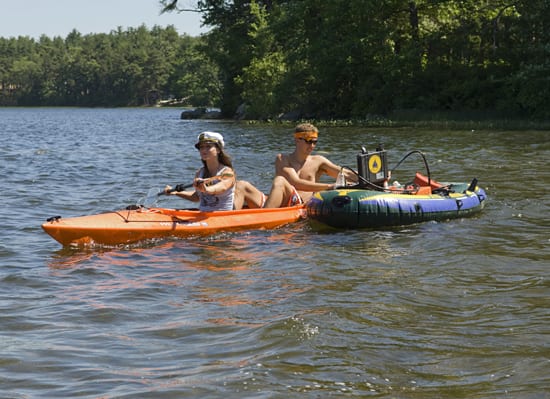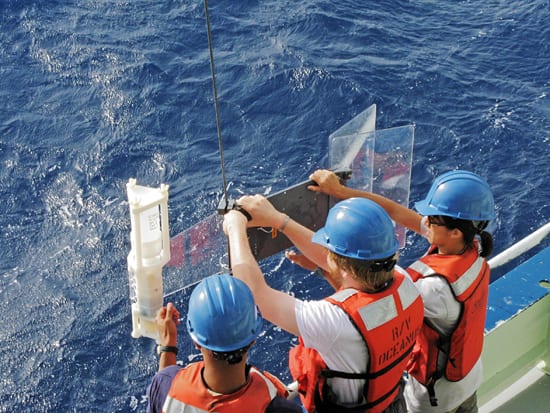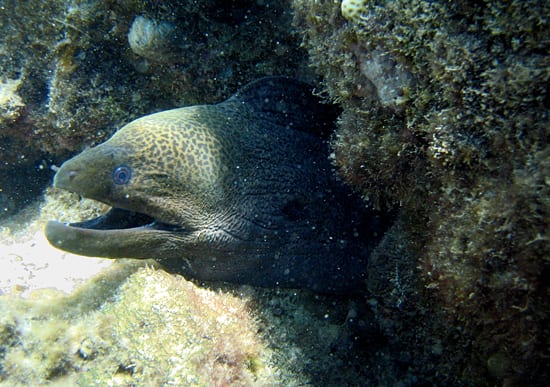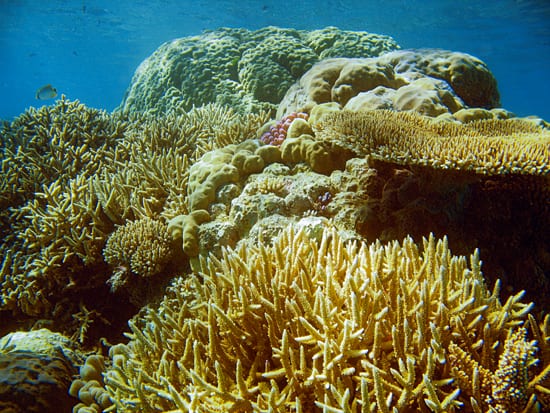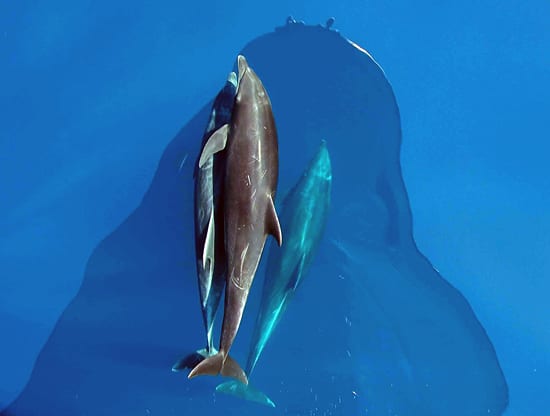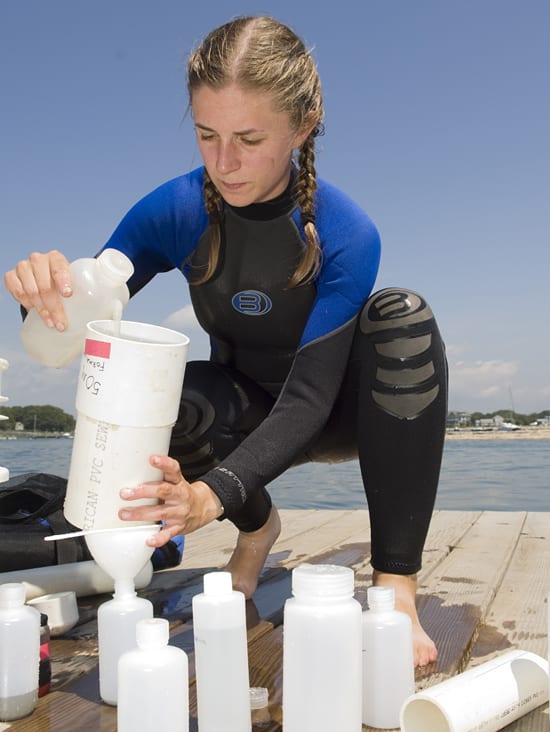Multimedia Items
A new star
New skeleton made by an eight-day old baby “golfball coral” reared in an experimental aquarium at the Bermuda Institute for Ocean Sciences forms a star-shape. The ongoing experiment is part…
Read MoreReady to roll
Members of the REMUS 6000 Operations Group Stephen Murphy (right) and Mark Dennett (left) roll out one of two newly-built Hydroid REMUS 6000 Autonomous Underwater Vehicles (AUVs) for transport to…
Read MoreMud, shells, and monsoons
Joint Program student Fern Gibbons scoops thin slices of mud from a long sediment core taken from the sea floor. Rinsing the mud samples through a sieve releases tiny fossil…
Read MoreHunting for eddies
“Hunting for eddies—this is effectively what we are doing with this instrument,” said Fiammetta Straneo, a researcher at Woods Hole Oceanographic Institution. This month, Straneo’s team is looking for eddies that…
Read MoreHome on the reef
An orange clownfish (Amphiprion percula) peeks out from the protection of sea anemones on a reef in Kimbe Bay, Papua New Guinea. Clownfish are the focal species in ongoing research…
Read MoreGive ’em the hook
Following a June 2008 dive off the west coast of Mexico, Alvin technician Jeff McDonald and Atlantis’ steward Carl Wood reach for the submersible’s tail line in preparation for “recovery”…
Read MoreWorking around the clock
Entries in the log mark the scientific work that continues day and night on an oceanographic cruise. During a recent cruise aboard the R/V Oceanus that WHOI scientist Phoebe Lam participated in,…
Read MoreJet-propelled Jelly
The image above shows a “jet wake” produced by a salp (also called a pelagic tunicate), a relatively common gelatinous animal in oceanic waters. Salps swim by jet propulsion, drawing…
Read MoreLooking to the ocean for cloud clues
Woods Hole Oceanographic Institution researchers Carlos Moffat and Sean Whelan, along with University of Hawaii graduate student Rebecca Simpson, deploy an instrument this month that they hope will shed light on the…
Read MoreTeam Tricho
MIT/WHOI Joint Program graduate students Annette Hynes, Elizabeth Orchard, and Phoebe Dreux Chappell make up the trio known as “Team Tricho.” Working in the microbial biogeochemistry group at WHOI, the…
Read MoreAlong for the Ride
This juvenile crab was hitching a ride inside the barrel-shaped body of a transparent, gelatinous pelagic tunicate collected at the Liquid Jungle Lab in Panama. Pelagic tunicates, or salps, are…
Read MoreArctic Winch
The Arctic Winch collects data near the ice surface, retracting if it hits ice, while a moored profiler gathers data from deeper ocean layers below.
Read MoreState-of-the-art tour
Biologist Darlene Ketten (far center) gives the 2008 class of WHOI Ocean Science Journalism Fellows a tour of the necropsy suite, where post-mortem studies of marine creatures are performed. The…
Read MoreOutside the Box
MIT/WHOI Joint Program student Kelly Rakow Sutherland captured this image of a box jellyfish (Carybdea sp.) during a night scuba dive off the Pacific coast of Panama at the Liquid…
Read MoreNot your typical “cold lab”
Greenland’s mountains came into view this October from the stern of the WHOI-operated research vessel Knorr. WHOI scientist Bob Pickart led a month-long expedition to the storm-swept Irminger Sea. Pickart and colleagues wanted to…
Read MoreMaking connections
Engineer Keith Von Der Heydt connects cables in Woods Hole prior to testing acoustic source drivers, in preparation for deployment for the “Surface Processes and Acoustic Communications Experiment,” also known as…
Read MoreReaching for sunlight
WHOI scientist Konrad Hughen, who studies tropical climate change recorded in coral skeletons, spotted this 15-cm (6-inch) “rosy finger coral” (Stylophora pistillata) at 2-3 meters depth while surveying the health…
Read MoreThe Many Faces of Trichodesmium
Cruising for clues
Students Nicole Trenhom (in cap) and Zion Klos used ground-penetrating radar this summer in a Cape Cod kettle pond to look for signs of former shorelines deposited during ancient droughts. They worked with…
Read MoreSub-surface sampling
WHOI scientist Phoebe Lam (right), WHOI-MIT joint program student James Saenz (center), and Pericles Silva (left) from Instituto Nacional de Desenvolvimento das Pescas in Cape Verde, deploy a vane sampler…
Read MoreMeet the neighbor
Konrad Hughen (in WHOI’s Marine Chemistry and Geochemistry Department) was diving in just 2-3 meters (6-9 feet) of water when this Red Sea resident came out to watch. Hughen studies…
Read MoreLandscape of history
Dense meter-high thickets of staghorn coral surround massive, rounded, ancient coral colonies in the background. WHOI scientist Konrad Hughen photographed this undersea landscape just 15 feet down while surveying corals…
Read MoreVisitors to a WHOI ship
Dolphins cruised next to the research vessel Atlantis this October while the ship traveled south of Baja California, en route to oceanographic research in the Sea of Cortez. “We just happened to…
Read MoreThe Mysterious Lives of Larvae
MIT/WHOI Joint Program graduate student Christine Mingione filters plankton samples from Waquoit Bay in search of shellfish larvae, which are no bigger than a fine grain of sand. Back at…
Read More

